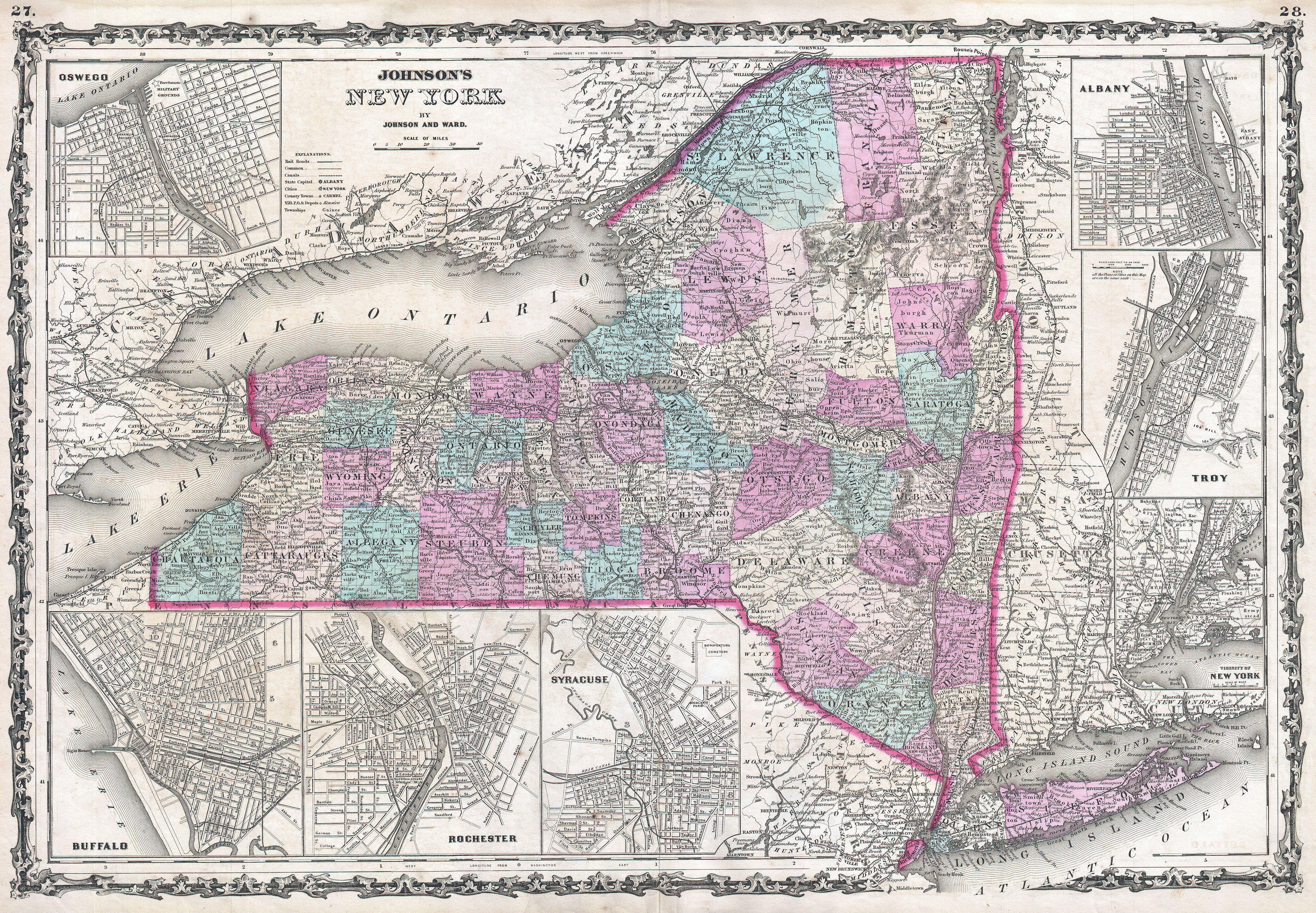I decided to move this column up a bit to explain the end of the series before the weekend, based on the amount of comments I received on Google+.
So what happened to David? Well, I decided to write a forum with my frustrations and see if someone else could see something that I could not.
Name: David Ingerson
Marriage to Almira Drake 1821 Evans Mills, Jefferson Co, New York, United States
Kid 1 Eneas Ingerson, b. 1832 NY
Census 1850 Gouverneur, Saint Lawrence, New York, United States
Marriage to Elizabeth Graves 1852
Mary J Ingerson, b. 1852 NY
Jay Eugene Ingerson, b. 1857 NY
Census 1860 Macomb, St Lawrence, New York, United States
Military 1864 Private, 92nd New York Infantry
Census 1870 Forester, Sanilac, Michigan, United States
Census 1880 Gouverneur, Saint Lawrence, New York, United States
Death 23 April 1886 Gouverneur, St Lawrence, New York
I've updated "Super David" above in bold with things that have moved further along the proof line. What does this map from Wikipedia have to do with anything? It represents something that I hadn't previously considered - that it was easier than expected to get between New York and Michigan at the time because of the railroad. Am I farther along in providing David's full line? No, but I have significant progress and I've also impacted several other folks in this same area (Elizabeth Graves Ingerson's family, in particular).
As most of you are probably saying, this is a charming aside, but what does it have to do with anything? I use this as an episode in how working with others, even those who don't know the ESM standard for evidence and have scrapbooks of census info and other documents and have trees on Ancestry can be helpful in pointing out how to critically evaluate evidence.
And that's what is missing from this treatment of new genealogists in the field. We are not using our opportunity to teach people critical thinking and evidence evaluation. We are in short, cutting off our own nose to spite our face. What's so frustrating is that social media offers so many opportunities to do better. In short:
1. We can go into depth and share our information with more people than ever before, thanks to blogs, online sources like Ancestry.com, Fold3, FindmyPast.co.uk, and many digital sources at our local libraries, like Early American Newspapers, 19th Century British Newspapers, and Heritage Quest, to name a few!
2. We can EXPLAIN in great detail the how, the when, and the why behind our decisions in making our trees. We are not limited by the length of the words that can fit on the page.
3. We can use many platforms to enhance the knowledge of folks who live even in the farthest reaches of the world.
If every genealogy blogger out there took the time to write one blog about a particular situation they faced and how they solved it, the world's knowledge base of genealogy would be greatly advanced, and for the folks that are choosing to learn about genealogy, represent a base of knowledge that could help them pick up their own critical thinking skills and be able to make the decision whether or not to add that 53,002nd person, or to walk away and work on a person in there existing tree.
In short, instead of throwing up our hands, calling them collectors and railing against what is immovable, we could give an effort to making things change, and then working on our own ability to manage what's out there. All we can control is what we do, not what THEY do.
As a result, my approach to these people has changed. Instead of sending angry rants to my genealogy buds about this, I'm trying really hard to make my approach to try and explain to people what is not correct, and then working on my own response to the issue. It is their onus whether or not they will take me up on learning why what they have is not correct. I can continue to use their research as a way to point me in a direction, but I will continue to critically evaluate every point in an ancestor's life, no matter what the source.



No comments:
Post a Comment